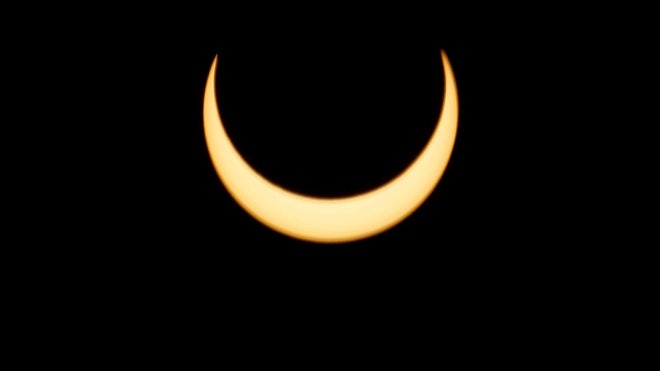
LOS ANGELES – Sunrises and sunsets often dazzle, but they’ll have a special ring to them in a few days for people in the western United States and eastern Asia: The moon will slide across the sun, blocking everything but a blazing halo of light.
It’s been almost two decades since a “ring of fire” eclipse was visible in the continental United States. To celebrate the end of that drought, nearly three dozen national parks in the path of the eclipse will host viewing parties.
The solar spectacle is first seen in eastern Asia at dawn Monday, May 20, local time. Weather permitting, millions of early risers in southern China, northern Taiwan and southeast Japan will be able to catch the ring eclipse. Then it creeps across the Pacific with the western U.S. viewing the tail end.
The late day sun will transform into a glowing ring in southwest Oregon, Northern California, central Nevada, southern Utah, northern Arizona and New Mexico and finally the Texas Panhandle where it will occur at sunset on Sunday. For 3 1/2 hours, the eclipse follows an 8,500-mile path. Viewing, from beginning to end, lasts about two hours. The ring phenomenon lasts as long as 5 minutes depending on location.
A ring eclipse — technically called an annular solar eclipse — is not as dramatic as a total eclipse, when the disk of the sun is entirely blocked by the moon. As in a total solar eclipse, the moon crosses in front of the sun, but the moon is too far from Earth and appears too small in the sky to blot out the sun completely.
“A bright ring around the sun at mid-eclipse is still pretty cool,” Geoff Chester of the U.S. Naval Observatory said in an email.
Asia is abuzz over the event. In Japan, cable cars will run early to give tourists an unobstructed view from the mountains. Ferries will make special trips so that others can enjoy the scene offshore. The Taipei Astronomical Museum will open its doors at dawn while Hong Kong’s Space Museum will set up solar-filtered telescopes outside its building on the Kowloon waterfront.
The last time this type of eclipse was seen in the U.S. was in 1994. This year’s solar show offers ringside seats at 33 national parks along the eclipse path including the Grand Canyon and Bryce Canyon. A partial eclipse can be viewed from another 125 national parks.
For die-hard sky gazers, six U.S. locations will see the moon cover about 95 percent of the sun’s diameter. They include the Petroglyph National Monument, Redwoods National Park, Lassen Volcanic National Park, Canyon de Chelly National Monument, Zion National Park and Glen Canyon National Recreation Area.
Fox News has the full article










